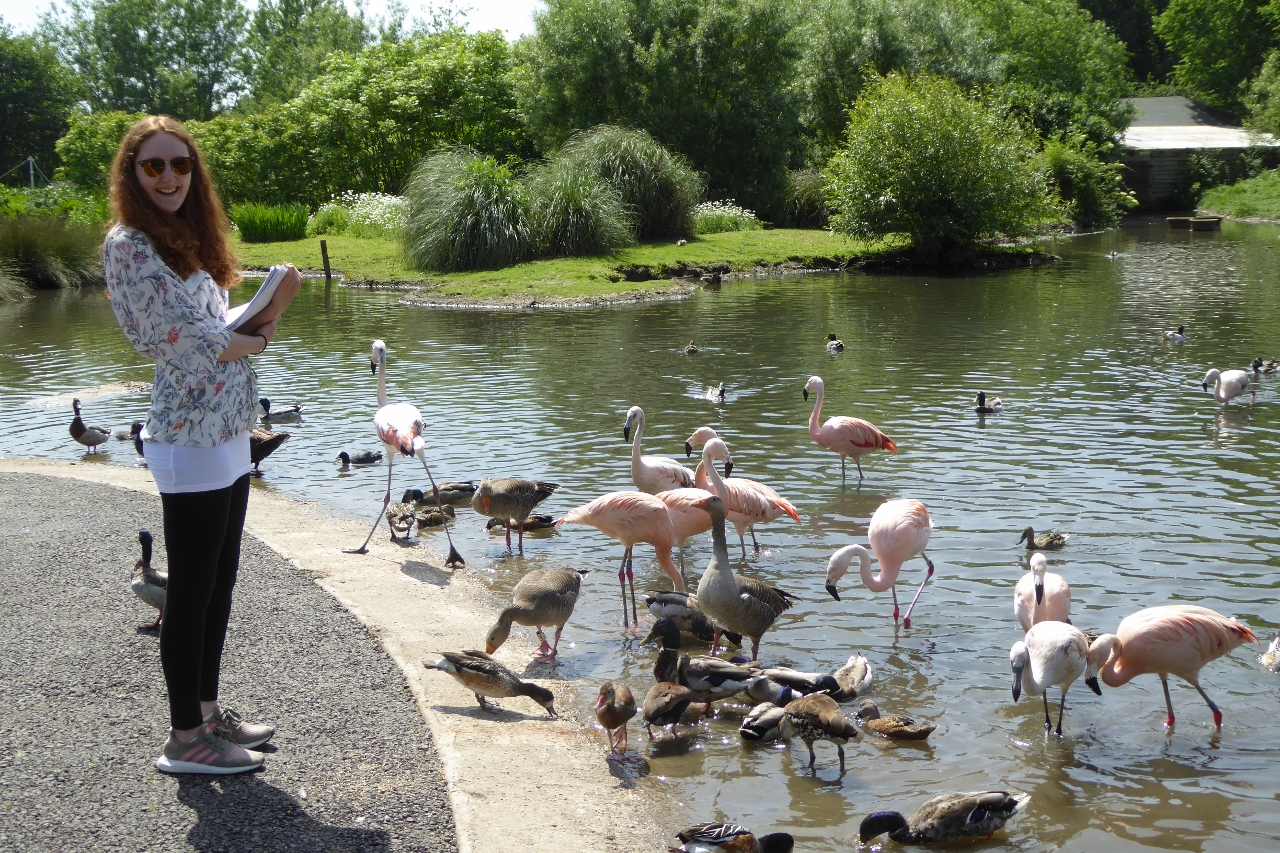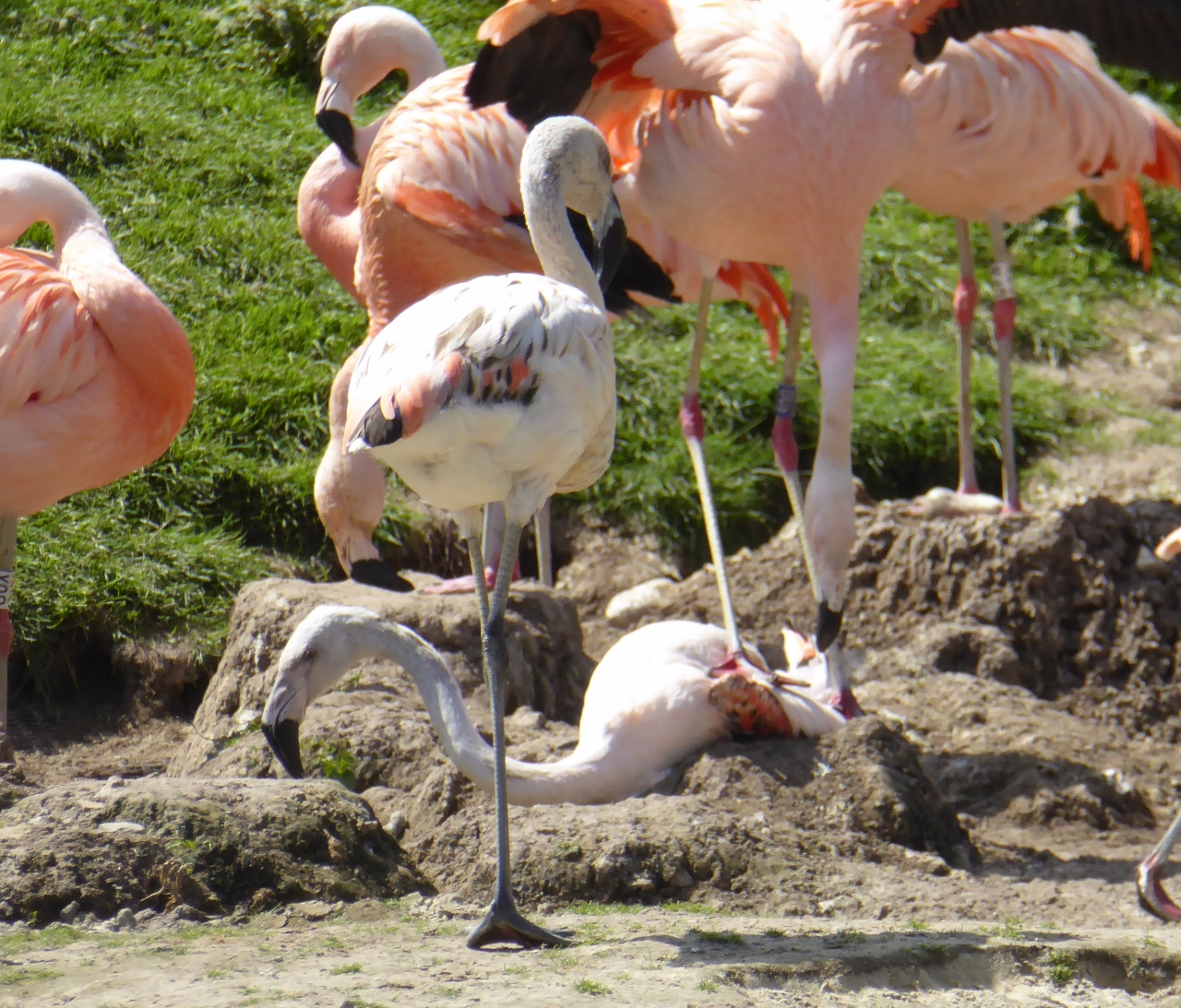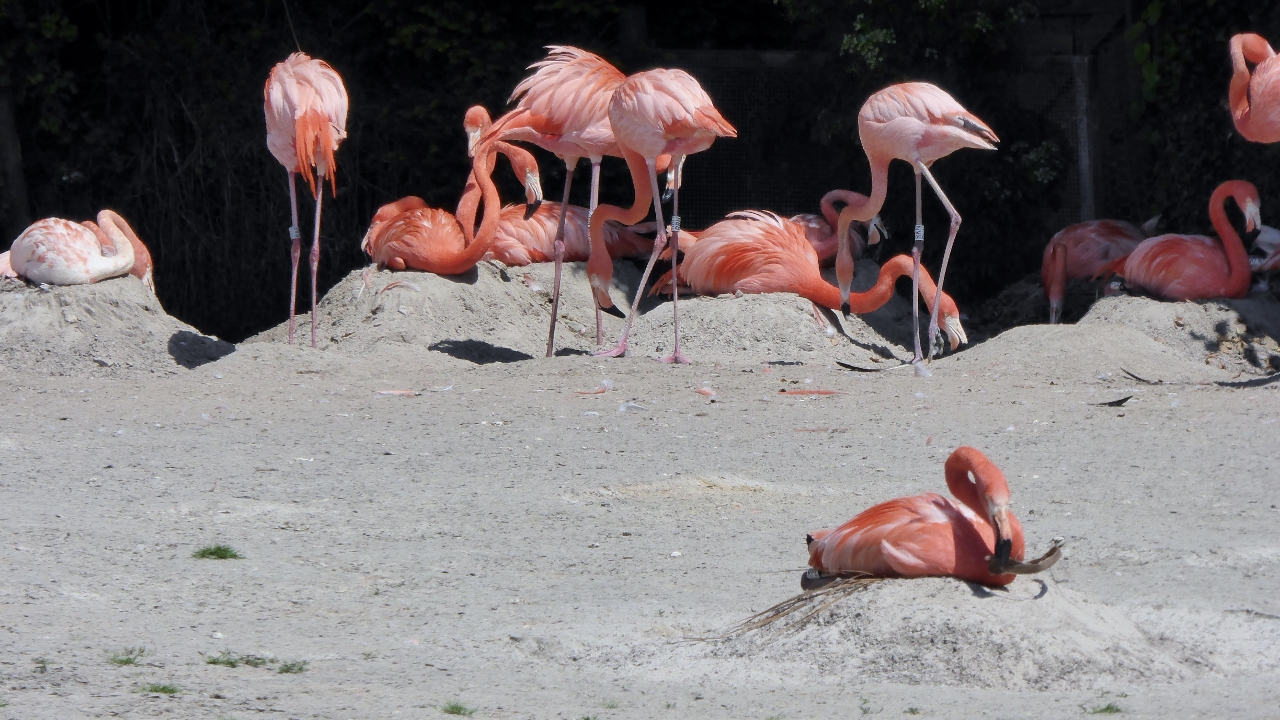A Chilean spotlight
I love this photo of my MSc student Danielle and an entourage of Chilean flamingos. How to make science exciting- get very close to your subject animal! Like Rachael, my student who I introduced you to in the last post, Danielle is spending the spring and summer at WWT Slimbridge to look more closely at the flock of Chilean flamingos. She can be found in the South American Pen making careful observation of individual birds to see what they are up to.
Danielle's project forms part of the long-term study into flamingo social behaviour, as we are attempting to dig down into why relationships between flamingos form. We know they do form. And we know they last over several years. Now we are trying to increase our understanding of what context these relationships appear in. Aggression is clearly something that affects relationships between birds, and anyone spending any amount of time looking at a flock of flamingos will see they engage in a fair amount of tit-for-tat between each other. We've seen some very intense fighting between birds in the WWT flocks, as well as some rather unusual ways of flamingos making their point too.
The photo above shows an adult Chilean flamingo standing on top of a juvenile bird that was sat down resting on an old nest mound. This is on the edge of the nesting area for this flock and so maybe the adult bird wanted to join in with nest building and renovate a pre-existing mound. Whatever the reason, it was not impressed with the presence of the younger bird and decided that the best way to claim this spot was to trample all over the bird that was in its way. The young flamingo eventually got the message and moved off to another area.
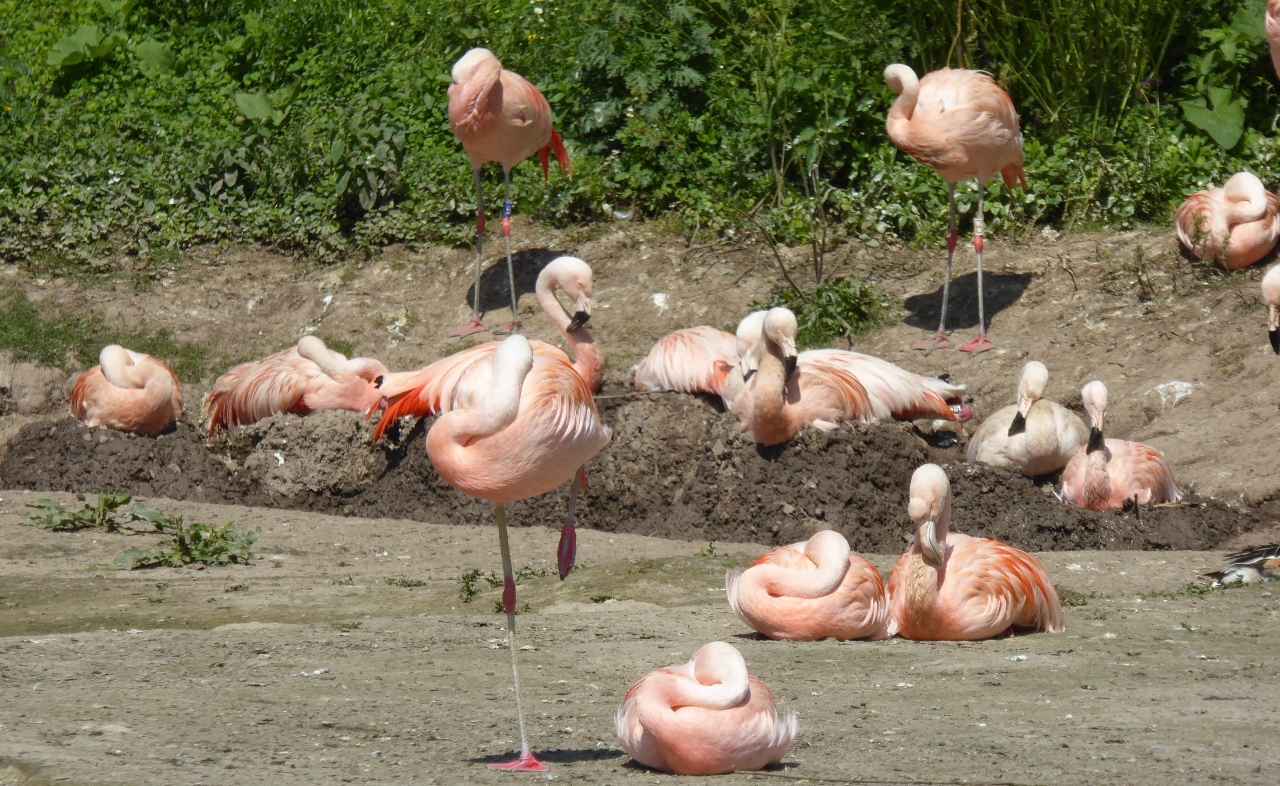 Substantial nests adorn the back of the Chilean flamingo's pen. Prime nesting spots are the subject of intensive battles between pairs.
Substantial nests adorn the back of the Chilean flamingo's pen. Prime nesting spots are the subject of intensive battles between pairs.
Danielle is watching the Chileans at a very exciting time, for it is not every year that the birds nest so early in the season. This breeding activity adds an extra dimension to the observations of this flock, as past students that have been watching this species have generally missed the main part of nesting when the Chileans have started to raise their young right at the end of summer and into autumn. Hopefully this earlier attempt will mean we get some interesting data to compare between early and later breeding years and what this means for flamingo "friendships".
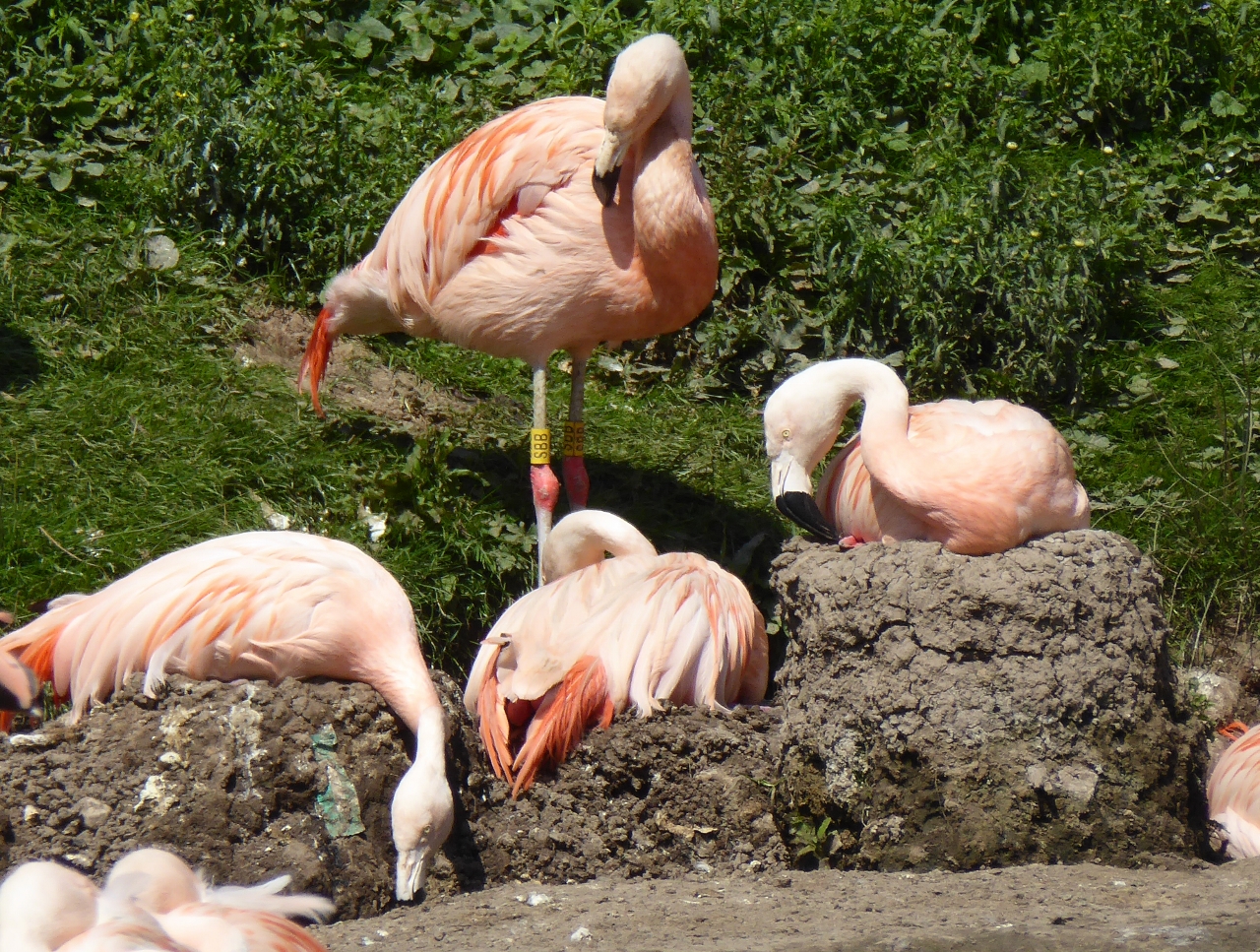 What a whopper! That's some extensive excavating. Whilst it might look like a lot of effort, a flamingo's nest mound can grow surprisingly quickly, especially as both partners take part in the building works.
What a whopper! That's some extensive excavating. Whilst it might look like a lot of effort, a flamingo's nest mound can grow surprisingly quickly, especially as both partners take part in the building works.
Aside of nesting, the other behaviour that will influence flamingo social interactions is feeding. Danielle can get very close to the birds in the South American Pen as they enjoy foraging along the edge of their pool, right next to where visitors will stand to get a good view of the birds on display. Displays of aggression can increase around feeding, and it's interesting to speculate on why this might be. Some birds can be shy when foraging without a close companion, and get braver and more pushy when they know their friends are about. By recording who is with whom, and who does something to whom, Danielle can measure the different types of dynamic that exist when different individual flamingos feed together.
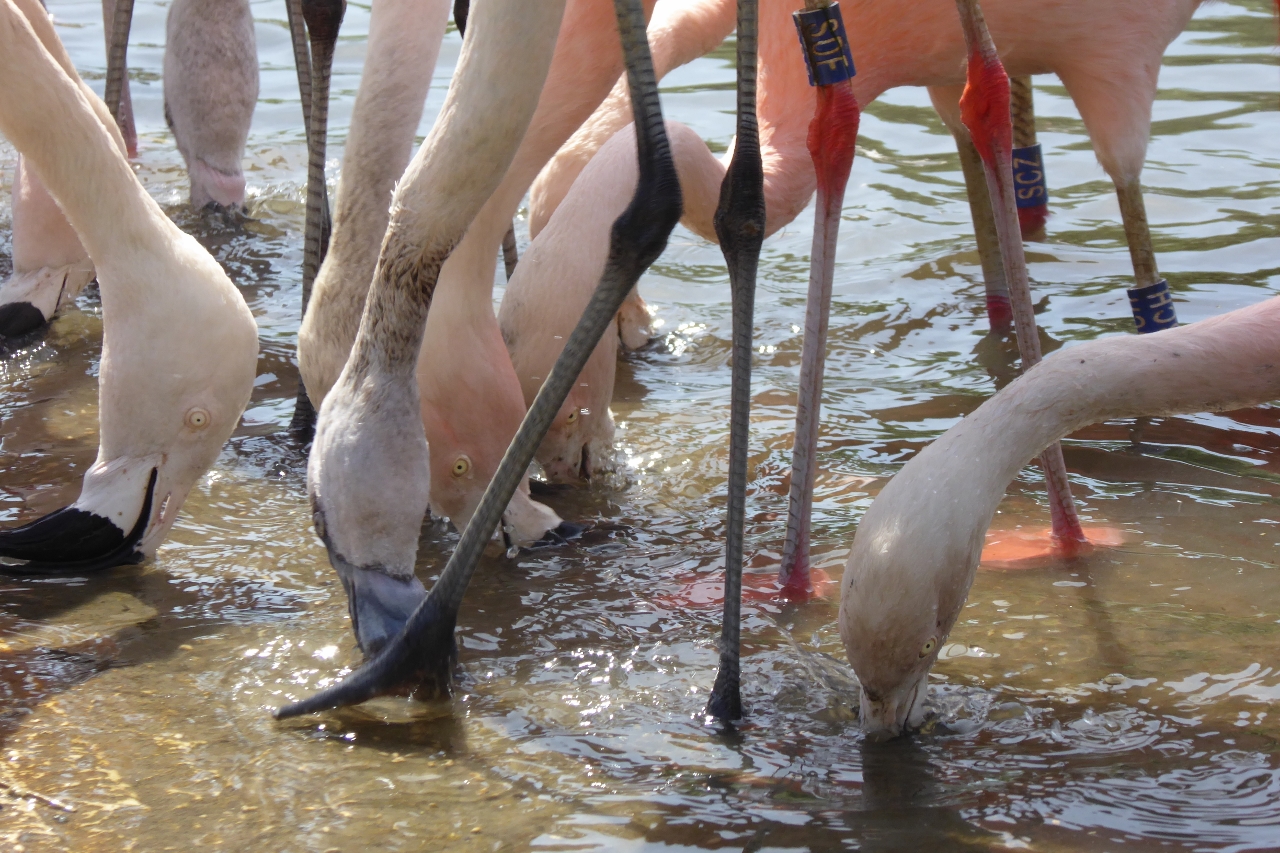 That's right in amongst beaks and legs. Patterns of aggression and differences in where birds can forage will be influenced by their social standing.
That's right in amongst beaks and legs. Patterns of aggression and differences in where birds can forage will be influenced by their social standing.
Danielle will be using Social Network Analysis to investigate her findings in more detail. Like we have done before with the flamingo studies, this means a picture of the different relationships within the flock can be drawn and the variables that might have influenced why these relationships exist can be explained at the same time. As Danielle is looking at who is with whom (associations) and who does what to whom (interactions), she will be able to evaluate the full range of flamingo relationships across the time of her observations, and see why certain behaviours occur when specific birds are found together.
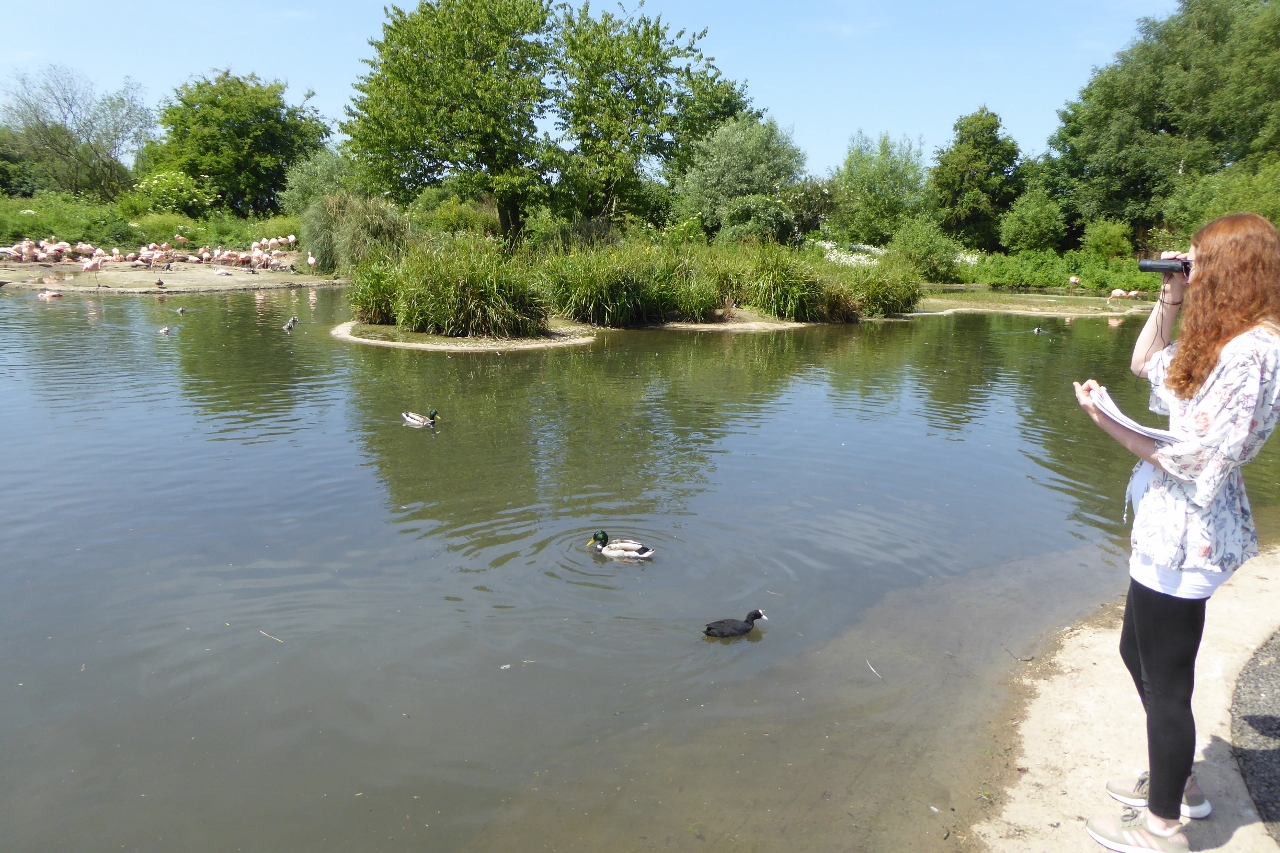 Watching the birds from this part of the enclosure means Danielle can see who is where in the nesting area, but also has already "blended in" to the background and therefore gets ignored when the birds wade over to where she is standing and take advantage of the afternoon duck feed.
Watching the birds from this part of the enclosure means Danielle can see who is where in the nesting area, but also has already "blended in" to the background and therefore gets ignored when the birds wade over to where she is standing and take advantage of the afternoon duck feed.
As we learn more about flamingo behaviour in captivity, it is important to allow birds the opportunities to do different things with different individuals. Not all birds like to be in the same vicinity as each other, and as birds will chose to avoid particular members of their group we can use information such as that gathered by Danielle to help make changes to flock management and housing. Phil and Sparky have already done this with the Caribbean flamingo flock- making the inside of their house more suitable to flamingos loafing out of the water with others they like to be with. If birds are to be housed inside longer over winter, because of Avian 'Flu, this kind of research has a real application to their welfare.
And with that mention of the Caribbean flamingos, leaving you with this photo...
More on their breeding behaviour and this maverick nest builder in my next instalment!
